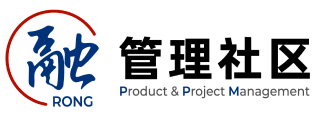PDCA循环到底应该怎么做
 620
620
版权声明
我们非常重视原创文章,为尊重知识产权并避免潜在的版权问题,我们在此提供文章的摘要供您初步了解。如果您想要查阅更为详尽的内容,访问作者的公众号页面获取完整文章。
Summary of the PDCA Cycle Article
The PDCA cycle is a tool designed to foster continuous improvement within organizations by following a structured approach. PDCA stands for Plan, Do, Check, and Actualize, representing the sequence of steps necessary to implement process improvements effectively. The article emphasizes the importance of understanding and living the concept, rather than just memorizing the acronym.
Understanding the PDCA Cycle
The PDCA cycle is a system of continuous learning and improvement, where a standard is set, and the performance is measured against this standard in a cyclical and repeating process. It combines data analysis with human reflection, allowing incremental improvements in daily work processes.
Stages of the PDCA Cycle
- Plan: Involves setting SMART goals and KPIs, considering preconditions, and inspiring individuals within the organization.
- Do: Execution of plans with data recording, monitoring through interactive dashboards, and allowing room for experimentation and error correction.
- Check: Comparison of actual results with planned results, using KPIs to identify and analyze discrepancies, and acknowledging accomplishments.
- Act: Adjustment and adaptation of plans and KPIs, fostering a mindset of continuous improvement and reflection on the PDCA progress.
Implementing PDCA with KPIs
Linking the PDCA cycle with KPIs is crucial for operationalizing the process, ensuring that improvement efforts are measurable, and avoiding superficial, one-time exercises. The article presents an example of reducing energy consumption as a PDCA cycle in practice.
PDCA Tips for Success
Key tips for successful PDCA implementation include integrating the cycle fully, applying it at all organizational levels, using reliable data for analysis, and taking the Check phase seriously. The article also advises linking major and minor PDCAs and making data-driven decisions.
The Data-Driven PDCA
The data-driven PDCA cycle adds four new dimensions to the traditional model: Passion in planning, Data in doing, Conscious control in checking, and Autonomy in actualizing. This approach respects the ideas of William Edwards Deming, emphasizing the use of statistics and data.
PDCA Pitfalls and Forms
The article clarifies that PDCA, Deming's circle, and related terms are synonymous, and highlights two basic forms of PDCA: the regular improvement cycle and the space for experimentation. Both aim to facilitate continuous improvement and innovation within an organization.
Conclusion
The PDCA cycle is a powerful framework for fostering an improvement culture within organizations. It is essential to fully understand and integrate the cycle, make it data-driven, and continuously strive for improvement to achieve sustainable and impactful results.
山猫掘金


白皮书上线








